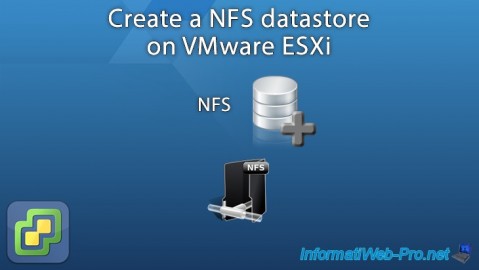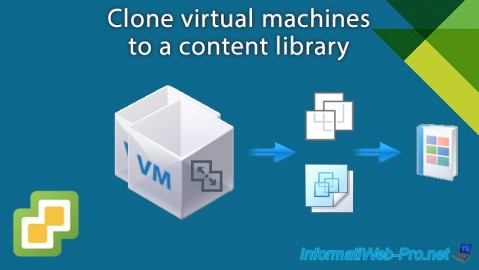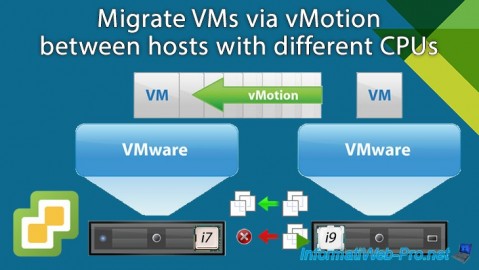Create a published content library (so that resources are accessible remotely) on VMware vSphere 6.7
- VMware
- VMware vCenter Server (VCSA), VMware vSphere
- 06 December 2024 at 12:11 UTC
-

- 5/5
6. Delete the contents of a previously synced item
To reclaim disk space on your datastore, you can delete the contents of items that you may have synchronized in the past, but that you no longer think you need.
To do this, click on "vSphere Client", then on: Content Libraries.

Click the name of your subscribed content library.

To delete content from an "OVF Template" item, go to the "Templates" tab of your subscribed content library.
As you can see, in our case, our "Win 10 v2004 x64" template takes 16.46 GB on our database.

To delete the contents of this element and therefore recover the 16.46 GB of disk space on our database, we can right-click "Delete element contents" on this one.

Confirm the deletion of the contents of the selected library item by clicking Yes.

If you look at the list of recent tasks (at the bottom of the page), you will see that 2 tasks have been executed:
- Delete file
- Delete item contents from library

Now, the size of this item in your subscribed content library is 0 bytes.

For other file types, you can do the same manipulation.
To delete the content of one of these elements (an ISO file for example), right-click on it and click: Delete element content.

Once the content of these items has been deleted from the subscribed content library, you can verify this deletion by going to the "Storage" tab.
As you can see, the subfolders corresponding to the items whose contents were deleted will be empty.


7. Manually sync an item
To avoid having to wait when you want to use a new item referenced in your subscribed content library, you can manually sync the items you want to download now.
This way, when you attempt to use them, there will be no need to re-download them from the published content library to which you are subscribed.
To manually sync an item (whether it's an OVF template or another file type, such as an ISO file), navigate to your subscribed content library page and go to the tab "Templates" or "Other Types" depending on the type of item you want to sync.

For this tutorial, we are going to synchronize our "Win 10 v2004 x64" OVF template which at the moment is 0 bytes given that it has not yet been synchronized.
To synchronize this item, right-click on it and click: Synchronize item.

A "Sync Library Item" task appears in the list of recent tasks.

If you look in your VMware vCenter Server storage, you will see that the file(s) for the item being synced are being downloaded.
To see this, refresh the contents of the subfolder corresponding to the item being synchronized and you will see that their size increases.


Once the item has finished syncing, the actual size of that item will appear.
Note that the size of an item not synchronized or being synchronized is always 0 bytes.

8. Delete a subscribed content library
If you wish, you can delete a subscribed content library at any time to remove your local copy of the published one.
The published content library will therefore not be affected in any way by this deletion. Only your local copy will be deleted.
To delete a subscribed content library, go to its page, then click: Delete.

Confirm the deletion of the subscribed content library by clicking Yes.
Note that the deleted items correspond to your local copy of the items available in the published content library.
Deleting your subscribed content library will therefore not delete the items present in the published content library.

Once the subscribed content library is deleted, you will be redirected to the library's page (which has been deleted).
Hence the error "You do not have permissions to view this object or this object does not exist" which appears.
In the recent task history, you will find the tasks:
- Delete file
- Delete library

Share this tutorial
To see also
-

VMware 7/29/2022
VMware ESXi 7.0 / 6.7 - Create a NFS datastore
-

VMware 12/20/2024
VMware vSphere 6.7 - Clone vApps
-

VMware 10/9/2024
VMware vSphere 6.7 - Clone virtual machines to a content library
-

VMware 11/13/2024
VMware vSphere 6.7 - Migrate VMs via vMotion (different CPUs)

No comment